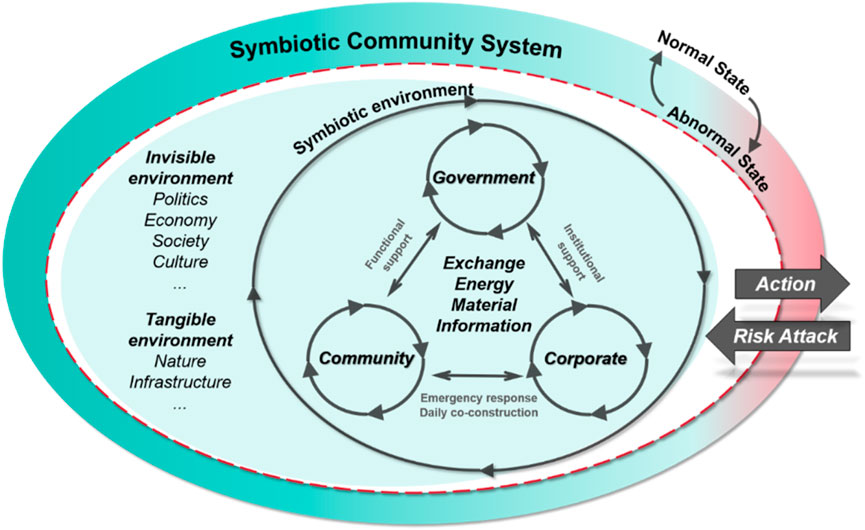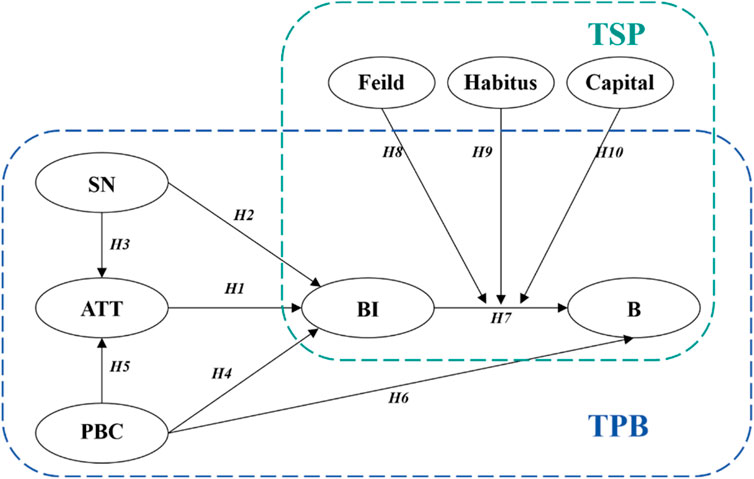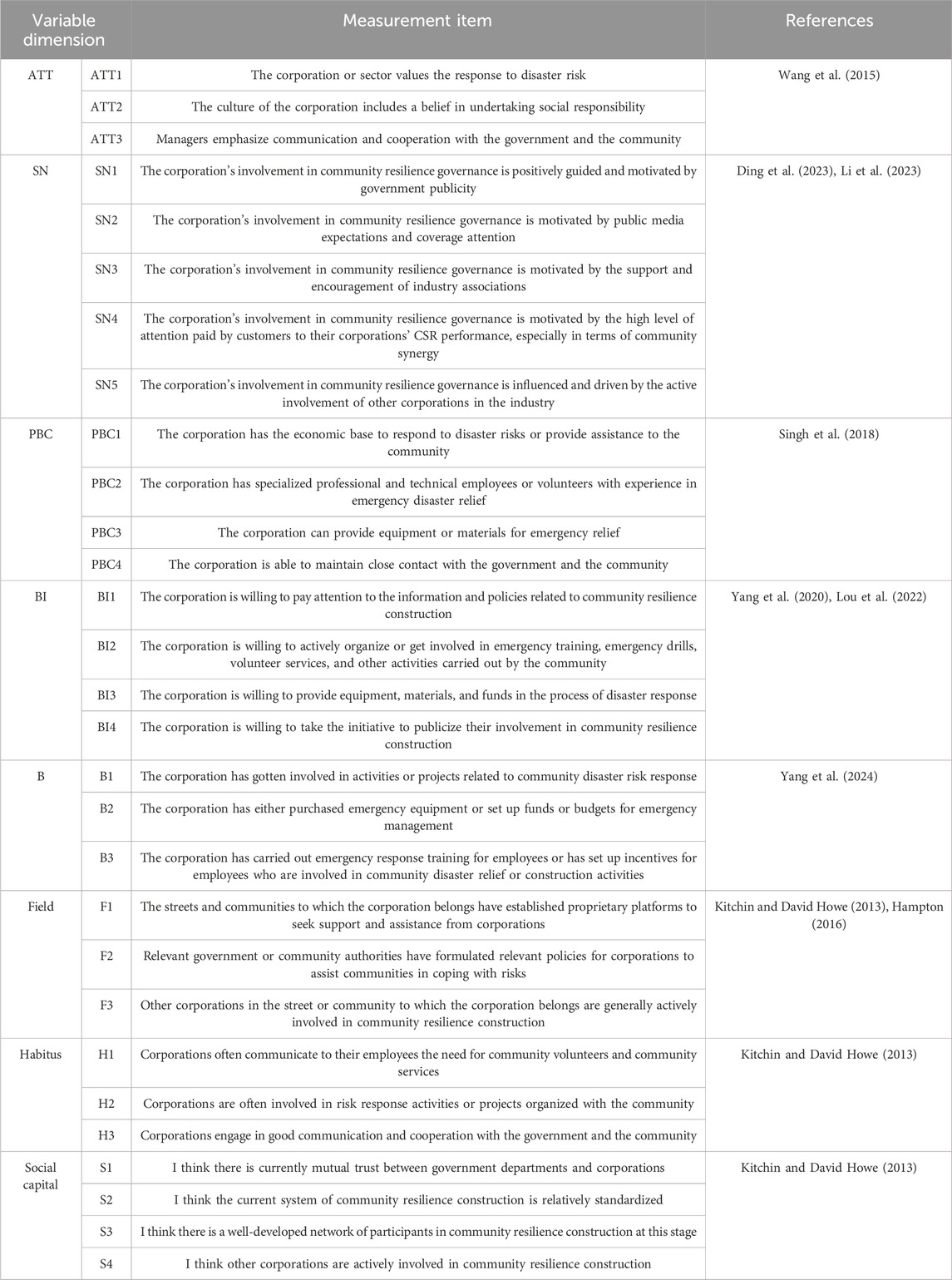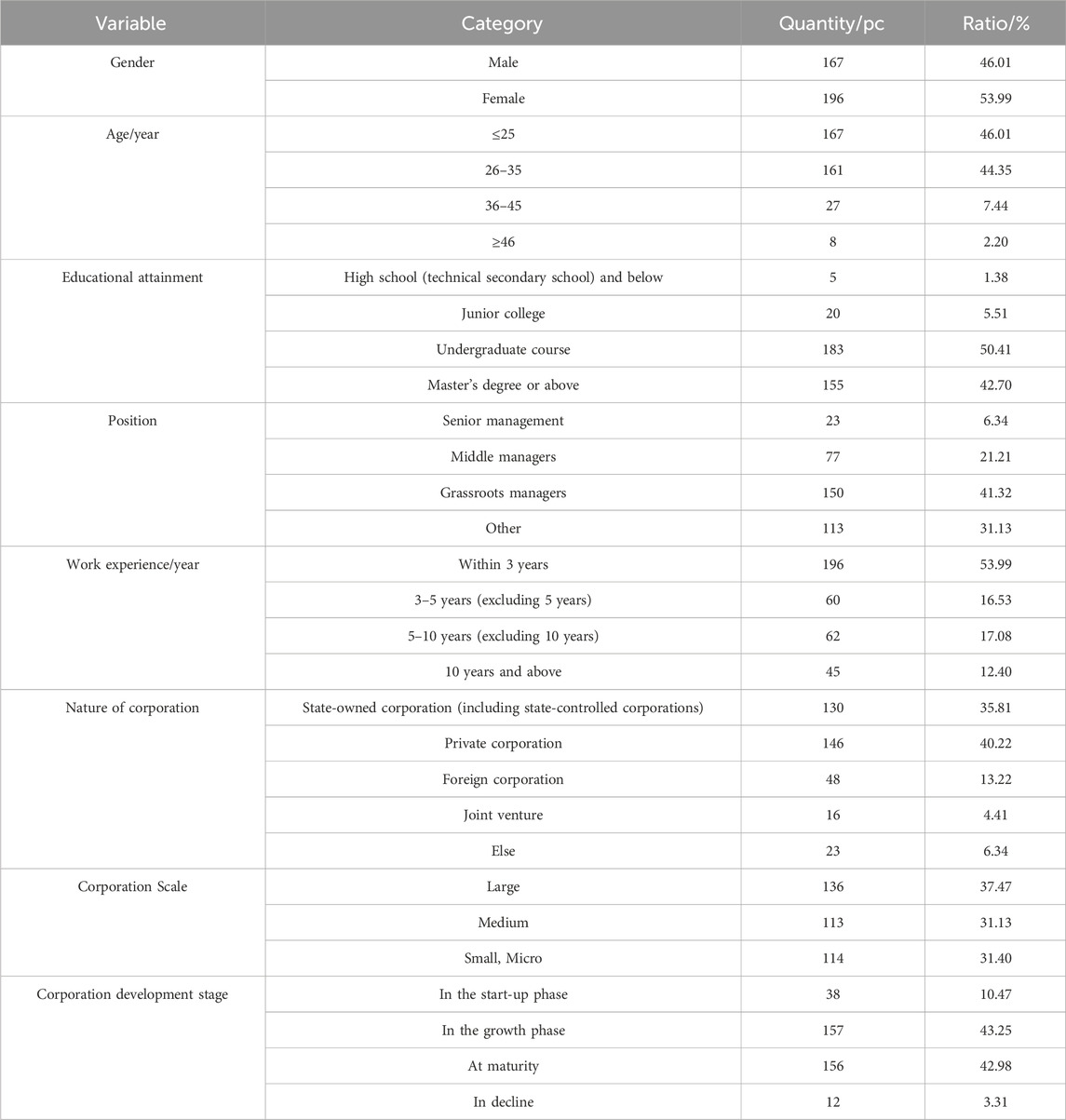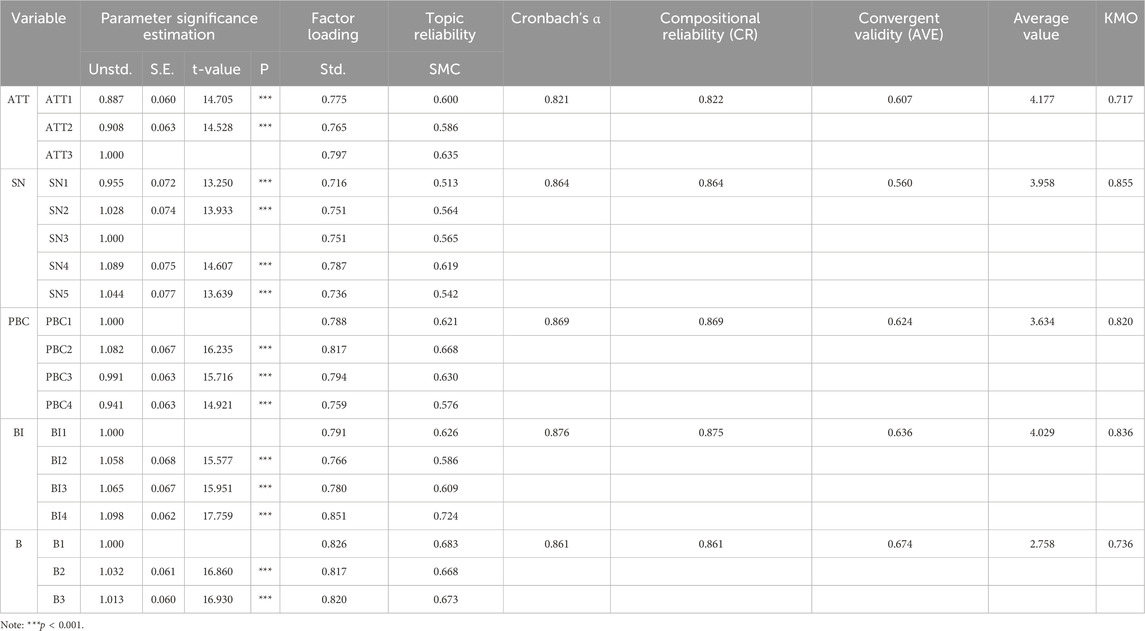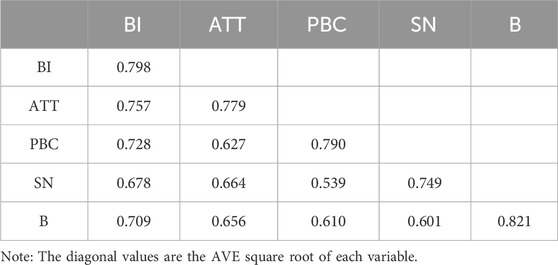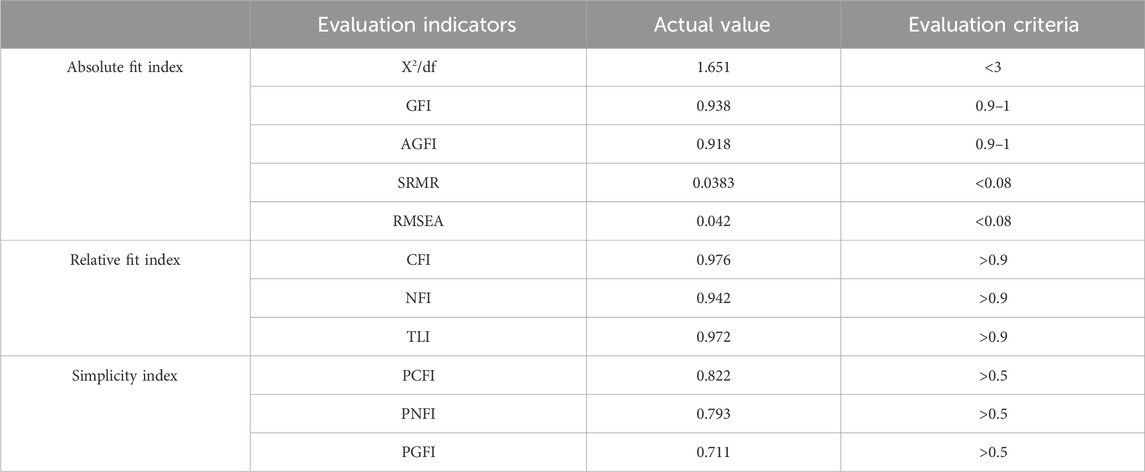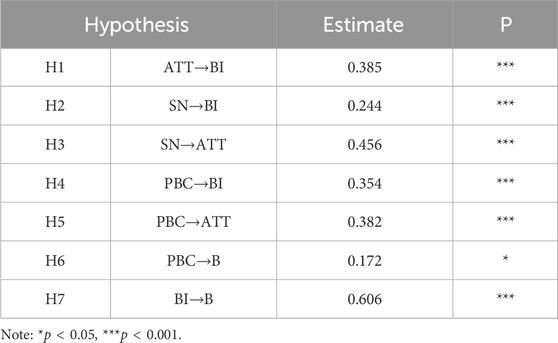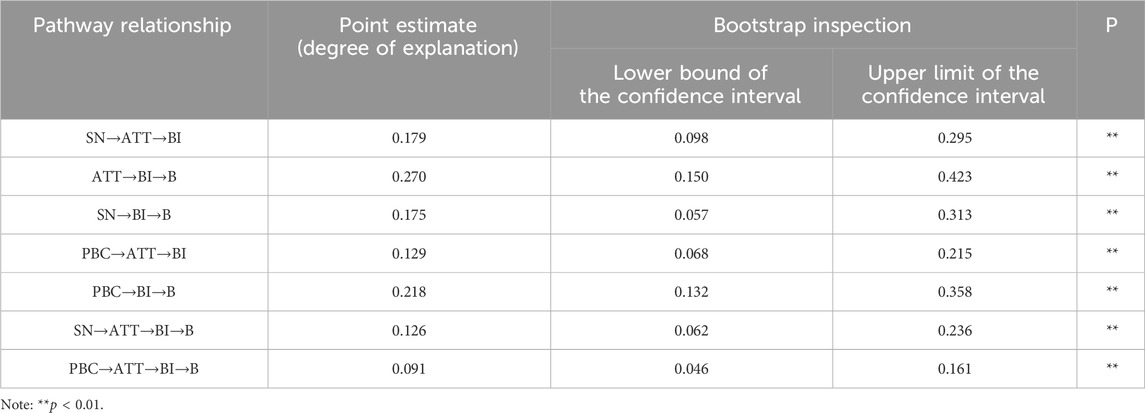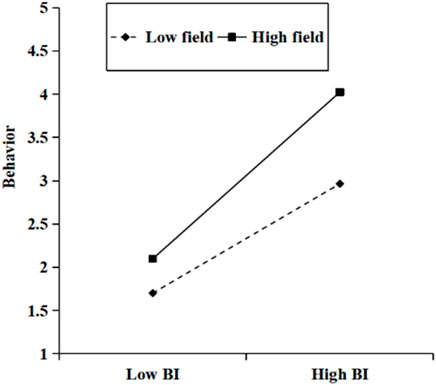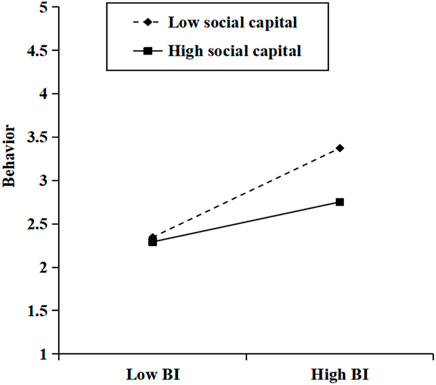- 1Institute of Management Science, Hohai University, Nanjing, China
- 2The National Key Laboratory of Water Disaster Prevention, Nanjing, China
Urban resilience is a new paradigm for urban risk governance, whereas developing community resilience is the foundation for better resilient governance. Corporations serve as both the foundation and pivotal factor in ensuring the resilience of a community. Therefore, it is vital to encourage their active involvement in community resilience governance. This investigated the key influential factors of corporations in community resilience governance as well as the influence paths related to these factors. Firstly, multi-participant symbiotic relationships in the community resilience symbiosis system were analyzed. The hypothesis model of corporations’ involvement in community resilience governance was proposed, combining the Theory of Planned Behavior and the Theory of Social Practice. Finally, the subjective and objective factors and influence paths were explored based on the structural equation model and the linear regression model by questionnaire investigation. The results show that: 1) Corporate involvement behavior is influenced by subjective factors such as behavioral attitude (ATT), subjective norm (SN), perceived behavioral control (PBC), and behavioral intention (BI), and also by objective community institutional factors including Field and Social capital. 2) The five influence paths to behavior (B) are as follows: SN→ATT→BI→B; PBC→ATT→BI→B; PBC→B; Field × BI → B; and Social capital × BI → B. 3) The involvement behavior is the result of a combination of rational and moral reasoning, with rationality preceding morality. Field capital and Social capital positively and negatively moderate the transformation of behavioral intention into behavior, respectively.
1 Introduction
Modern society faces a variety of challenges, from natural disasters to social crises. With the process of urbanization, our cities are facing not only natural disasters like floods, earthquakes, and storms but also kinds of social risks such as pandemics, environmental pollution, economic downturns, and so on, which have a profound impact on the population (Vesalon and Remus, 2013; O’Brien et al., 2023; Remus et al., 2023). In this context, cities are becoming increasingly vulnerable and susceptible. The traditional emergency governance strategy has been unable to meet the actual needs of urban governance when dealing with these complex problems. Improving urban resilience to resist risks has become a revolutionary urban planning method and a new paradigm of urban governance, and it has become an urgent direction to explore and practice (Datola, 2023). The resilient city belief, espoused by non-governmental organizations, international organizations, and specific countries, has had a considerable impact on modern urban governance practices. In 2010, the United Nations Strategy for Disaster Reduction (UNISDR) launched the Make Cities More Resilient program. The Sendai Framework for Disaster Risk Reduction 2015–2030, the United Nations Sustainable Development Goals (SDGs), and the Paris Agreement all call for worldwide efforts to build resilient, inclusive, secure, and sustainable countries between 2015 and 2030. China has incorporated the creation of “resilient cities” into its 14th Five-Year Plan, drawing on the United Nations’ disaster reduction plan and successful international initiatives.
The community, as the city’s basic unit, is the first field of disaster and crisis impacts, the direct bearer of risk consequences, and the core of post-disaster societal reconstruction (Zhang et al., 2023). Nations around the world are putting more emphasis on community governance and improving community resilience planning and practice (Gerges et al., 2023). The community is a compact social system consisting of various entities such as corporations, local administrations, and communities (Stotten et al., 2021). Corporations serve as both the foundation and pivotal factor in ensuring community resilience. Corporate assistance to communities may reduce losses and aid in community reconstruction (Ballesteros et al., 2017). Additionally, corporations’ development plans and business practices play a crucial role in supporting the community’s sustainable development across environmental, social, and economic dimensions (DiBella et al., 2023). Meanwhile, corporations accomplish the enhancement of their economic interests, the promotion of their own reputation, and the development of community relations (Kumar et al., 2022). However, the top-down community governance paradigm, led by the government, remains dominant in China’s practice of resilient governance. In this approach, the government frequently serves as both the decision-maker and the executor, whereas corporations and communities are more passive, accepting and implementing government decisions and plans. The strict and one-sided paradigm ultimately results in poor communication and collaboration between corporations and communities, as well as little corporate involvement and enthusiasm for community governance (Liu et al., 2021; Wang et al., 2021). To address the limits of the current community governance model, it is essential to encourage corporations to become more active in developing community resilience. Therefore, it is vital to investigate the key influential factors of corporations in community resilience governance as well as the influence paths related to these factors. It is expected that more extensive corporate involvement in community resilience governance will enhance community resilience and sustainable development.
2 Literature review
Urban resilience is the ability of cities to respond, adapt, and evolve in the face of various unexpected events. Previous studies have focused on urban resilience assessment and resilience governance. From the macro perspective, some scholars have assessed urban resilience according to society, economy, and ecology (Huang et al., 2023), while others have constructed resilience assessment indicators tailored for specific events or areas (Yu et al., 2023; Han et al., 2023). Community resilience governance has progressively emerged as an important topic of interest (Meriläinen, 2020). Some studies have proposed collaborative governance as a key approach to community resilience governance, emphasizing the active involvement and close cooperation of diverse entities such as corporations, government agencies, and residents to jointly build a community governance system with strong resilience (Cheng et al., 2020; Liu Z. et al., 2021). However, it is also pointed out that resilience governance at the community level differs from conventional governance in that it focuses on strengthening communities’ resilience to risks (Gajendran and Oloruntoba, 2017), emphasizing holistic and systemic multiple synergies (Mahajan et al., 2022). Certain scholars have suggested a transition from the conventional collaboration model to the symbiosis model, which emphasizes the reciprocal attributes of cooperation and symbiosis (Liu et al., 2023). Under the theory of “urban symbiosis,” the city is perceived as an intricate and methodical social and ecological system, comprised of numerous interconnected and interacting components (Ness and Xing, 2017). The concept of symbiotic governance is consistent with the belief in community resilience, emphasizing the systemic and interactive deep collaborative relationship formed by community governance participants such as corporations, governments, and communities within the community system, which promotes multi-dimensional resilience and sustainable development of communities.
Corporations, as prominent market actors, play an important role in the community governance process because of their considerable resources, technology, innovation, and expertise in the market (Franco and Ali, 2017). Current research on corporate involvement in community governance primarily focuses on two aspects: corporate social responsibility (CSR) and corporate community involvement (CCI). Community-oriented CSR activities are broad and superficial, including environmental preservation, charitable giving, and community connection development, with the benefit of increasing community capability and wellbeing (Gamu et al., 2015; Frederiksen, 2018; Pegg, 2012). CCI focuses on deeper involvement in the community and issues solutions in a more active and planned manner to support community development (Liu et al., 2013). This type of involvement encompasses more than the mere provision of material or financial aid; it also entails active collaboration with local communities in the development of tourism initiatives, poverty alleviation projects, pollution emission reduction, and the promotion of environmentally protective technologies (Delannon et al., 2016; Gold et al., 2018; Yang et al., 2019). The current research on the influential factors of corporations’ involvement tends to be corporation-centered, as evidenced by scholars’ in-depth examination of the internal factors of corporations, such as corporate performance, CEO characteristics, and firm characteristics, on the influence and mechanism of their involvement (Bhaskar et al., 2023; Van Huong et al., 2023; Fosu et al., 2024). There is also macro-level research on policy, economics, the cultural environment, and various perspectives on corporate involvement in community governance (Bowen et al., 2010).
Given the stringent requirements for corporate involvement set by community resilience governance, previous studies primarily focused on the interests of corporations, failing to uncover the underlying motivations driving corporation behavior. Therefore, it is necessary to comprehensively explore the influential factors and mechanisms of corporate involvement from the perspective of the community system. In the context of community resilience governance, an in-depth study of corporate community involvement is helpful to understand more clearly the multiple roles and responsibilities of corporations in the community, as well as the influential factors and mechanisms of their deep involvement in community governance. This study combined the Theory of Planned Behavior and the Theory of Social Practice, employing the structural equation model and linear regression model to conduct a more comprehensive study on the subjective and objective factors influencing corporations’ involvement in community resilience governance from the perspective of symbiosis theory.
3 Analysis of community resilience symbiotic system and research hypotheses
3.1 Analysis of the community resilience symbiotic system
The community is comprised of a complex social ecology where companies, governments, community organizations, and residents coexist. In order to ensure their own existence and growth, they have to be involved in sharing resources and interdependence, thereby enhancing the community’s organic interaction and collaborative problem-solving capacity. In the realm of community governance, normal and abnormal governance situations are intertwined, with the normal governance situation maintaining prominence. The change between the two governance situations is mutually dependent and intertwined, requiring strong coordination and joint efforts across different community participants. Thus, in light of the significant objective of fostering resilient governance within communities, symbiosis has emerged as an unavoidable strategic decision. This research provides a comprehensive analysis of the community symbiotic resilience system and reveals its internal mechanisms and operational processes from two perspectives: system composition and multi-subject symbiotic relationships.
3.1.1 Community symbiotic resilience system components
A community symbiotic resilience system, as depicted in Figure 1, is a complex system comprising important components, including symbiotic units, modes, environments, and interfaces. These components collaborate to preserve the sustainability, resilience, and stability of communities.
The symbiotic unit serves as the foundation of the system, encompassing the community, government, corporations, etc., which promote community development through cooperation and coordination. The symbiotic mode refers to the interactions between these components, wherein various patterns influence resource utilization, task accomplishment, and issue resolution. The symbiotic environment is divided into two parts: the tangible environment, such as nature and infrastructure, and the intangible environment, involving politics, economy, culture, etc., collectively composing the basis of resilient communities. The symbiotic interface, serving as a critical platform, facilitates the interchange of matter, energy, and information, thereby strengthening the symbiotic bond among units. Information flow occurs via the public service platform; material flow consists of the system of government and mechanisms; and energy flow involves the production and distribution of value. Collectively, these components constitute a symbiotic system of community resilience that is both sustainable and stable in the face of adversity.
3.1.2 The symbiotic relationships of resilient community governance
The relationships among symbiotic units, comprising the government, the community, and corporations, are intricate and nuanced within the community’s symbiotic resilience system. Each entity possesses unique resources, capacities, and functions, collectively propelling community growth. Community residents actively engage in community life and stand as primary beneficiaries of community development. Mutual collaboration, information sharing, and shared decision-making among residents are pivotal for bolstering community resilience and stability. Government agencies serve as guides and supporters of the symbiotic community resilience system. Through policy formulation, financial resource allocation, and infrastructure development, they create conducive environments and conditions for community advancement. Corporations, integral components of the community’s symbiotic resilience system, offer substantial economic support, resource integration, innovative capabilities, crisis response, and community involvement. A consensus on “symbiosis” among corporations, communities, and governments enables them to establish resource-sharing partnerships and collaborate embeddedly through both non-profit and for-profit initiatives. This collaboration effectively addresses the diverse needs of the community in both routine and extraordinary governance scenarios. The interdependence and interaction among these diverse participants in the community’s symbiotic resilience system have forged a complex and closely-knit network of relationships.
In the community symbiotic resilience system, corporations are encouraged not only to provide superficial emergency response measures such as disaster assistance and donations but also to actively engage in all aspects of resilience governance. This deeper involvement aims to enhance the symbiotic synergy between communities and corporations. Corporations’ involvement in community resilience governance can be categorized into two distinct types: normal community-corporation co-construction behavior and abnormal disaster response behavior. Normal community-corporation co-construction behavior represents a multidimensional and comprehensive cooperation model that covers five core aspects: public welfare activities, infrastructure co-construction, fostering business communities, promoting industrial economic cooperation, and supporting ecological protection and development. Abnormal disaster response behavior, on the other hand, entails the swift provision of robust anti-disaster support by corporations in response to community needs during times of crisis. This response encompasses three main aspects: financial donations, the provision of essential services and support, and the active involvement of employees in volunteer activities.
3.2 Research hypotheses
This study combines the Theory of Planned Behavior (TPB) and the Theory of Social Practice (TSP) from a symbiotic perspective to comprehensively explore the subjective and objective factors that affect corporate involvement in community resilience governance. Figure 2 illustrates the construction of the research hypothesis framework.
The Theory of Planned Behavior (TPB), originating in social psychology, has become a pivotal framework for analysing decisions concerning corporate social responsibility behavior (Ding et al., 2023; Li et al., 2023). This theory integrates three subjective cognitive variables: behavioral attitude (ATT), subjective norm (SN), and perceived behavioral control (PBC), collectively shaping behavioral intention (BI) (Ajzen, 1991). BI is widely recognized as a crucial predictor of actual behavior (B) (Ajzen, 1991). Research indicates that subjective norms and perceived behavioral control contribute to corporate behavioral attitudes, with perceived behavioral control directly influencing actual behavior (Ding et al., 2023). Moreover, in the examination of corporations’ involvement in school-corporation cooperation, it was observed that perceived behavioral control significantly positively impacts their involvement (Zhang et al., 2022). Based on the aforementioned research, it is believed that in the process of corporate involvement in community resilience governance, corporations’ behavior is influenced by three key factors: behavioral attitude (ATT), perceived behavioral control (PBC), and subjective norm (SN). As corporations are part of the community’s symbiotic resilience system, their behavior is intricately intertwined with community development. In this process, corporations are not only constrained by social pressures (SN) from various parties but also adjust their attitudes (ATT) toward involving themselves in community resilience governance based on their evaluation of the difficulty of governance involvement (PBC). When corporations demonstrate a positive attitude (ATT) and perceive a strong level of social pressure (SN) while having high perceived behavioral control (PBC), their intention (BI) to get involved in community resilience governance will be further stimulated and strengthened. Additionally, this behavioral intention (BI) and perceived behavioral control (PBC) directly determine their actual level of involvement and effectiveness in community resilience governance. Based on the aforementioned in-depth analysis and discussion, this paper proposes hypotheses H1 to H7.
The Theory of Social Practice (TSP) elucidates the behavioral patterns exhibited by actors through three fundamental elements: capital, field, and habitus (Husu, 2022). The term “field” pertains to the arrangement or interconnection of objective relationships among numerous subjects, serving as the platform for actors to collaborate and get involved in interactions (Kitchin and David Howe, 2013). The relative strength of the field’s power determines, to some extent, the actors’ decisions and behaviors (Kump, 2023). Habitus can be described as a “system of sustained and transformable tendencies” whereby people have a propensity to acquire knowledge through their previous behavioral encounters and subsequently apply that knowledge to generate new actions (Sahakian and Wilhite, 2014). Furthermore, the TSP theory places significant emphasis on the notion of capital, which pertains to the capacity of organizations or individuals to obtain resources via social network connections (Nguyen-Trung et al., 2023). Social capital drives collective activity by sending positive signals that stimulate the willingness of actors to invest in social relationships, thereby facilitating cooperation and contribution among members to jointly achieve collective goals (Pretty, 2003). Given that corporations are deeply embedded in the complex network of the community resilience symbiosis system, their involvement in community resilience governance is inevitably influenced by a series of objective community factors. According to the TSP theory, this paper argues that the behavior of corporations involved in community resilience governance is actually affected by objective factors such as the habitus of corporations, the keen perception of the community resilience governance field, and the accumulation of social capital. A good community field environment can not only effectively reduce the information asymmetry between corporations and communities but also deepen corporations’ cognition and understanding of community resilience governance, so as to encourage corporations to transform their behavioral intentions into concrete actions. In addition, if corporations have a good habitus of involving themselves in community resilience governance, it can provide solid support for their actual involvement behavior. At the same time, the rich accumulation of community social capital also plays an irreplaceable role in promoting close cooperation and joint contribution between communities and corporations and jointly promoting the long-term realization of resilient governance and community symbiosis goals. Based on the above analysis, hypotheses H8 to H10 are proposed in this paper.
In conclusion, this study proposes the following hypotheses:
H1. Behavioral attitude (ATT) impacts the behavioral intention (BI) of corporate involvement in community resilience governance.
H2. Subjective norm (SN) impacts the behavioral intention (BI) of corporate involvement in community resilience governance.
H3. Subjective norm (SN) impacts the behavioral attitude (ATT) of corporate involvement in community resilience governance.
H4. Perceived behavioral control (PBC) impacts the behavioral intention (BI) of corporate involvement in community resilience governance.
H5. Perceived behavioral control (PBC) impacts the behavioral attitude (ATT) of corporate involvement in community resilience governance.
H6. Perceived behavioral control (PBC) impacts the behavior (B) of corporate involvement in community resilience governance.
H7. Behavioral intention (B) impacts the behavior (B) of corporate involvement in community resilience governance.
H8. Field moderates the relationship between behavioral intention (BI) and behavior (B) of corporate involvement in community resilience governance.
H9. Habitus moderates the relationship between behavioral intention (BI) and behavior (B) of corporate involvement in community resilience governance.
H10. Social capital moderates the relationship between behavioral intention (BI) and behavior (B) of corporate involvement in community resilience governance.
4 Research method and data collection
4.1 Model selection
To validate the research hypotheses, this study employed structural equation modeling and the linear regression model. Structural equation modeling (SEM) is primarily utilized to examine the direct effects and paths between variables in TPB models, whereas the linear regression model is used to test the moderating effects hypothesis based on TSP theory.
Structural equation modeling (SEM) is a statistical analysis method that examines the correlations between observable and latent variables according to predefined theories. Structural equation modeling comprises measurement modeling and structural modeling. Measurement modeling shows how unobserved latent variables are related to observed variables and assesses the reliability and validity of the observed variables. Structural modeling examines the causal connections between latent variables. The exogenous factors in this study model are SN and PBC, while ATT, BI, and B are endogenous variables. Each variable’s measurement matrix consists of the measurement dimensions relating to it. Evaluating the correlation between variables involves examining the path coefficient and its statistical significance. Interaction effects between variables can be categorized as direct impacts and indirect effects, with the total utility being the combination of both.
Linear regression models are frequently employed to elucidate the connection among independent variables, dependent variables, and control variables (Park and Yi, 2022). It is widely utilized to demonstrate the impact of specific factors on the correlation between two variables. The study examines the relationship between the behavioral intention (BI) of corporations involved in community resilience governance, the behavior (B) of corporate involvement in community resilience governance, and the moderating variables field, habitus, and social capital. According to the questionnaire design, the five variables mentioned are all continuous variables. Here is the linear regression model.
where the dependent variable Y represents the behavior of corporations involved in community resilience governance (B), whereas β is a random constant factor. X1∼X3 represent the control variables of corporation scale, development stage, and nature, while
4.2 Questionnaire design
This study designed a questionnaire based on existing mature measurement scales and conducted a pilot study with 30 respondents. Subsequently, the scale was modified according to the results of the pilot study and the actual situation of corporations involved in community resilience governance, resulting in the final research scale of this study. The survey questionnaire consisted of three parts: 1) Basic information about the sample. 2) TPB scale: five variables (ATT, SN, PBC, BI, and B) related to corporate involvement in community resilience governance. 3) TSP scale: three variables (field, habitus, and social capital) related to corporate involvement in community resilience governance. These variables were measured using a 5-point Likert scale, where the dimensions “1 to 5” respectively represented “strongly disagree,” “disagree,” “neutral,” “agree,” and “strongly agree.” Specific variables, measurements, and reference sources are presented in Table 1.
4.3 Data collection and test
Corporate employees were selected as research subjects for this study, which investigates pertinent information about corporate employees and their respective organizations. During the survey period of August to September 2023, the questionnaire was disseminated electronically via the network application. After eliminating invalid questionnaires, 363 valid questionnaires remained, for an effective rate of 90.75 percent out of a total of 400 questionnaires distributed. The questionnaire consists of three sections: fundamental subject information, fundamental corporate information about the subject’s employers, and the measurement scale for research variables. Table 2 shows the basic information of the collected questionnaires.
The basic demographic information indicates that the number of women in this survey is marginally greater than that of males. Those under the age of 35 comprised 90.36 percent of the total samples. Comprising 93.11% of all the participants, the majority of those involved held a bachelor’s degree or higher. The majority of the positions were administrators, comprising 68.87% of the total samples; 53.99% of the individuals had at least 3 years of experience in the organization. Non-state-owned corporations comprised the majority of those surveyed, accounting for 64.19% of the total. The size distribution of the companies investigated was relatively uniform. A significant proportion of the corporations, amounting to 86.22%, were in the developmental stage of growth and maturity.
As can be seen in Table 3, the Cronbach’s α values, CR values, and standardized factor loadings for all measurement question items on the measurement scales in this study were higher than the reference value of 0.7 and statistically significant (p < 0.01). Combined with Table 4, it can be seen that the AVE value of each variable is greater than 0.5, and the square root of the AVE of each construct is greater than the correlation coefficient between the individual constructs. The scale displays good reliability and validity and is appropriate for further investigation.
5 Results and discussion
5.1 Subjective factors analysis
5.1.1 Evaluation of model fit
Before examining the impact mechanism, it is required to evaluate the model fit to verify its dependability. The absolute fit index, relative fit index, and parsimony index are employed for evaluating models. As shown in Table 5, every indicator satisfies the predetermined criteria, and the theoretical model exhibits a strong correspondence with the sample data. This suggests that the model developed in this research is rational and dependable, enabling a more comprehensive examination of the interrelationship among variables.
5.1.2 Analysis of the impact of subjective factors
The significance of the model path of corporate involvement in community resilience governance established in this study is evident, as shown in Figure 3. Consequently, hypotheses H1–H7 are confirmed. The following is an analysis of the subjective factors that influence the mechanism of corporate involvement in community resilience governance.
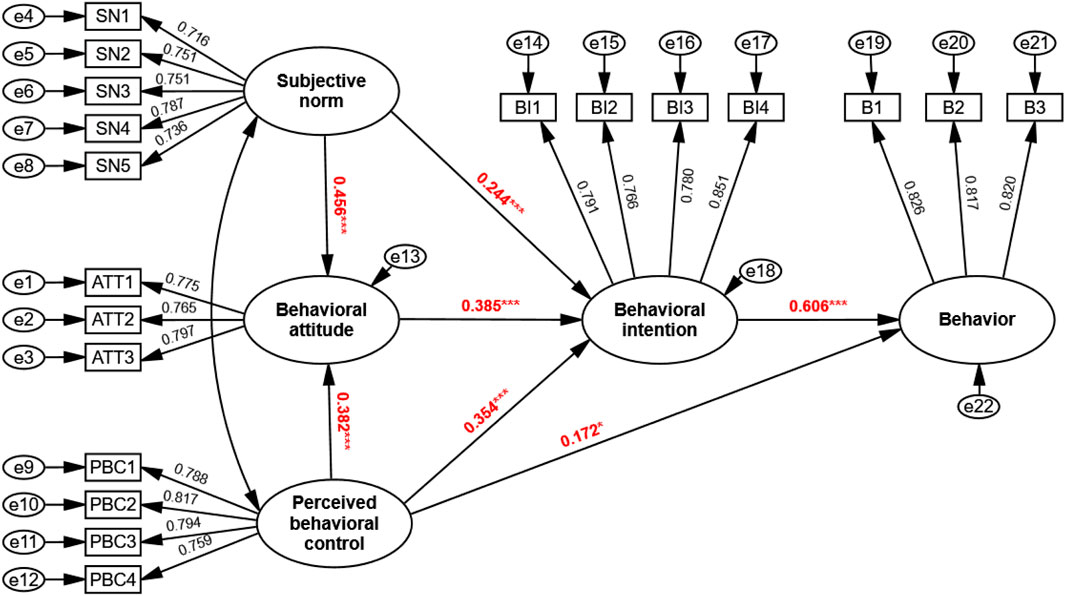
Figure 3. Standardized path estimation for the structural equation model (*** indicates p < 0.001, ** indicates p < 0.01, * indicates p < 0.05).
5.1.2.1 Behavioral attitude
The factor loading coefficients for the three components of ATT are as follows: 0.775, 0.765, and 0.797, respectively, with ATT3>ATT1>ATT2. ATT3 is the factor that exerts the most significant impact on the corporate behavioral attitude. This finding suggests that managers’ attitudes play a critical role in facilitating corporate involvement in community resilience development. The standardized path coefficient of ATT→BI is 0.38 (p < 0.001), and hypothesis H1 was verified. Furthermore, it was observed that the standardized path coefficients for SN→ATT and PBC→ATT were 0.456 and 0.382 (p < 0.001). These results supported hypotheses H3 and H5. This indicates that the corporate attitude toward community resilience governance is shaped by both external pressures and the self-evaluation of capabilities. External pressures have a more significant impact. This result supports prior research findings and validates the interaction link between ATT, SN, and PBC (Ding et al., 2023; Cialdini et al., 1990). According to the comprehensive analysis, it can be concluded that corporations formulate their perspectives on community resilience involvement by taking into account regulatory obligations, social expectations, and their own sustainability concerns. Corporations that adopt a positive attitude towards their involvement in community resilience governance will exhibit a greater propensity to take action.
5.1.2.2 Subjective norm
The load coefficients for SN’s five factors are 0.716, 0.751, 0.751, 0.787, and 0.736, with SN4 having the highest coefficient. Customer expectations about company involvement in community resilience building are a notable factor in this research. The standardized path coefficient for the relationship between SN and BI is 0.244 (p < 0.001), and H2 is confirmed. This implies that the expectations of various stakeholders—including the government, industry associations, consumers, peer competitors, and the public media—contribute to the behavioral intentions of corporations regarding community resilience governance.
5.1.2.3 Perceived behavioral control
PBC’s four factor load coefficients are 0.788, 0.817, 0.794, and 0.759, in that order. The human capital, material assets, and financial resources of a firm are significant indicators of its capability. Assuming H4 is validated, the standardized path coefficient of PBC→BI is 0.354 (p < 0.001). The standardized path coefficients of PBC→B and BI→B are 0.172 and 0.606, respectively, which are significant at the levels of 0.001 and 0.05, and the hypotheses H5 and H7 are verified. Behavioral intention is a more direct and significant factor for corporations to get involved in the behavioral practice of community resilience governance. Corporations will thoroughly assess their own capabilities when formulating decisions. When organizations possess robust capabilities across all domains, they exhibit a greater inclination to get involved in collaborative efforts aimed at enhancing community resilience and are better equipped to operationalize this understanding. Table 6 displays the results of the hypothesis testing.
5.1.2.4 Analysis of the influence path and total effects
In this paper, the bootstrap method and user-defined estimands were employed to test the mediation effect in the model, and 1,000 repeated samples were sampled under a 95% confidence interval. The criterion for the significant existence of an intermediary effect is that the estimated confidence interval does not contain 0. The test results are shown in Table 7.
After testing, none of the path confidence intervals in Table 7 contain 0, indicating that the mediation effect exists significantly and that the model has multiple chain mediation paths. Combined with the test of direct effects, the subjective factors in this study formed three main influence paths: 1) SN→ATT→BI→B; 2) PBC→ATT→BI→B; and 3) PBC→B. Behavioral intention and corporate behavioral attitude are crucial intermediary variables, with subjective norms and perceived behavior control exerting both direct and indirect influences on behavioral intention. The total effect of behavioral attitude, subjective norm, and perceived behavioral control on firm behavioral intention is 0.385, 0.423, and 0.483, respectively, and the total effect on behavior is 0.270, 0.301, and 0.481, respectively.
This suggests that these three types of factors play a crucial role in shaping the behavior of the corporate community’s involvement in community resilience governance, which is consistent with the findings of existing TPB-based corporate behavioral studies (Khan et al., 2020; Lang et al., 2023). However, it is notable that the three factors, PBC, SN, and ATT, show a decreasing trend in the degree of cumulative influence on behavioral intention and behavior. The rational factor (PBC) precedes the moral factor (SN) among the influential factors of corporations. In contrast, scholars in the study of sustainable production behaviors in cement manufacturing corporations found that SN had a greater influence on behavioral intention than ATT and PBC, i.e., the moral factor of social pressure was more important (Luo et al., 2017). Research on corporate social and environmental responsibility practices to reduce greenhouse gas emissions has also pointed to SN as a more critical factor influencing practice behavior compared to PBC (Lin et al., 2018). This difference stems from the highly interactive and sustainable requirements of community resilience governance, which requires a higher standard of involvement behavior from corporations. Rather than just providing shallow assistance, corporations are required to integrate deeply with the community to achieve co-development, co-existence, and sharing. In addition, the systematic governance of community resilience and symbiosis makes it necessary for corporations to consider more complex factors, and their behavior is no longer the isolated action of a single individual but the product of multi-participant collaboration and interaction. Therefore, as rational economic subjects, corporations, in the decision-making process of their involvement in community resilience governance, need to have a deep understanding of and a sense of moral responsibility in order to promote their own active involvement in community governance; at the same time, they also need to weigh the pros and cons prudently to ensure that their willingness and level of involvement match their actual ability. This decision-making process is highly consistent with the rational decision-making cognition demonstrated by corporations in fulfilling their CSR (Sun and Li, 2022).
5.2 Objective factors analysis
The study utilized a linear regression model to examine how three objective variables—field, habitus, and social capital—affect the transition of corporate involvement in community resilience building from intention to action. The goal was to measure the influence of these variables on the changeover. The analysis results are shown in Table 8.
In Model 1, only corporate size, corporate registration type, and corporate development stage control variables are considered. Model 2 adds four variables of behavioral intention, field, habitus, and social capital on the basis of Model 1. Model 3 adds the interaction terms corresponding to behavioral intention and field, habitus, and social capital on the basis of Model 2. Table 8 specifically shows the results of processing the three models. From the results of the analysis, it can be seen that from Model 1 to Model 3, the R2 change is significant (Sig. F Change<0.05), and the inclusion of moderating variables is statistically significant in predicting the improvement of the corporation’s involvement behavior.
5.2.1 Impact analysis of control variables
In Model 1 and Model 2, the type of corporate registration has a significant negative impact on involvement behavior, and corporations with a background in state-owned attributes are more likely to take action in the process of community resilience governance. This is attributed to the dual nature of state-owned corporations, which not only bear the burden of the nation’s economic development but also must attend to a range of non-economic social initiatives; as a result, their pro-social behavior practices surpass those of other corporation types (Kong et al., 2022). There is no statistically significant relationship between corporation size, corporation registration type, corporation development stage, and involvement behavior in corporate community resilience governance in Model 3. This result is not surprising given that earlier research has demonstrated that these variables have a mixed effect on company behavior (Huang and Zhao, 2016; Matuszak et al., 2019; Wang et al., 2022).
5.2.2 Impact analysis of objective variables
In regression Model 2 and Model 3, there is a statistically significant relationship (p < 0.001) between corporate behavioral intention and corporate behavior. This finding is consistent with the results of the TPB model study and supports a second verification of hypothesis H7. The determination of the effects of moderating variables on corporate involvement behavior primarily relies on the coefficients and p-values of the interaction terms.
The coefficient of BI x field on the behavior of involvement in community resilience governance is 0.095 and p < 0.05. As shown in Figure 4, this indicates that the field moderates the relationship between behavioral intention and behavior in a significant positive way; conversely, the imperfect field impedes the transformation of corporate involvement in community resilience governance intention into behavior in a significant hindering way (see Figure 4). Thus, hypothesis H8 is confirmed. During the governance of corporate collaborative community resilience, the community’s single channel of involvement and the imperfect field of asymmetric information regarding resilient community governance may prevent corporations from obtaining timely information about the community’s needs and from getting involved more effectively in the governance of the community under the direction of government policies.
The coefficient of BI x habitus on behavior is 0.035 and p > 0.05, indicating that corporate habitus has no significant moderating effect between behavioral intention and involvement behavior in community resilience governance, and hypothesis H9 was not verified. The motivations and behaviors of corporations regarding pro-social sustainability are not determined by a single factor. Although these behaviors are often reinforced by habitus, they can occasionally clash with the pursuit of economic interests (Font et al., 2016). The present study finds that prior involvement of corporations in community governance and resilience governance practices and experiences does not have a substantial impact on the conversion of behavioral intentions into actual behaviors.
The coefficient of BI x social capital on involvement in community resilience governance behavior is −0.142 and p < 0.001. According to the findings, as shown in Figure 5, social capital has a significant negative moderating influence between behavioral intention and behavior in community resilience development (see Figure 5), which contradicts the H10 hypothesis. Previous research has found that the presence of social capital enhances the growth of social interaction networks and assists companies in making better use of resources (Matsaganis and Wilkin, 2015). Research also revealed a dynamic and positive interaction between corporate social responsibility, social capital, and corporate value (Mengke et al., 2023). However, this study reveals that excessive accumulation of social capital in the practice of community resilience governance may inhibit corporations from translating their desires into actual acts, resulting in “inconsistency between words and deeds” among corporations. In the context of high social capital, the minimization of reciprocity, free-riding behavior, and the weakening of the cooperation desire of organization members undoubtedly reveal the double-edged characteristics of social capital (Zhang and Zhang, 2023).
Combining the results of the in-depth tests of the moderating effects of objective factors, two influence paths of the community objective factors, field and social capital, on the influence of corporation behavior can be clearly identified: 1) Field × BI → B 2) Social capital × BI → B. Specifically, on the one hand, field moderates positively the process of transforming corporate behavioral intention (BI) to behavior (B); on the other hand, social capital moderates negatively the process of transforming corporate behavioral intention (BI) to behavior (B). Research on corporation-stakeholder collaboration in Chiang Mai’s tourism industry insightfully points out that the matching of field and social capital is the cornerstone of successful corporate practices (Çakmak et al., 2018). In particular, this study points out that in the process of corporations’ involvement in community resilience governance, field and social capital have non-negligible positive and negative moderating effects on corporate behavior. However, the mismatches and imperfections that exist in the current practice seriously constrain the effect of corporations’ involvement and value creation. This also reveals the complexity of community resilience governance and the need to emphasize and promote the matching and balanced development of field and social capital in order to more effectively promote the practice of community resilience governance.
5.3 Corporation-related attribute analysis
This study selects three core corporate attributes, namely, corporation registration type (CRT), corporation size (CS), and corporation development stage (CDS), for correlation analysis. The five types of corporate attributes are integrated in this study into two categories: state-owned corporations (SOEs) and non-state-owned corporations (NSOEs). The size of corporations is large, medium, and small-micro. The four stages of corporation development are start-up, growth, maturity, and decline. As can be seen from Table 9, CRT has a significant negative effect on all eight variables, and the significance level of this effect is 0.01. This result clearly indicates that SOEs have a significant advantage over non-SOEs on the above eight variables. In particular, the impact of the difference in CRT is particularly significant in the variable of perceived behavioral control, which further emphasizes the importance of the nature of the corporation in shaping the perception of its own behavioral control. In addition, the detailed data in Table 9 also shows that CS has a significant negative effect on the variables of subjective norm (SN), perceived behavioral control (PBC), and behavior (B) at the significance level of 0.01. At the significance level of 0.05, CS also has a significant negative effect on Attitude Towards Behavior (ATT), Level of Fields (F), and Habits of Firms (H), which implies that as the size of the corporation decreases, the scores on these dimensions also show a decreasing trend. For CDS, Table 9 shows that it has a significant positive effect on perceived behavioral control (PBC) and corporation behavior (B) at the 0.05 level of significance.
6 Conclusion and suggestion
6.1 Conclusion
From the perspective of symbiosis, this paper considers the corporation as a communal symbiotic unit. Based on the integration of the Theory of Planned Behavior (TPB) and the Theory of Social Practice (TSP), this article quantitatively investigated the subjective and objective factors that influence corporate involvement in the development of community resilience. The conclusions are as follows.
Corporate involvement is influenced by both subjective and objective factors during the community resilience governance process. Critical factors include subjective behavioral attitude (ATT), subjective norm (SN), perceived behavioral control (PBC), and behavioral intention (BI), in addition to objective community institutional factors including field and social capital. These influential factors interact and determine corporations’ active conduct in the development of community resilience. These factors form five influence paths to influence the behavior (B) of corporations’ involvement in community resilience governance, as follows: SN→ATT→BI→B; PBC→ATT→BI→B; PBC→B; Field × BI → B; Social capital × BI → B. From the subjective perspective, the behavioral decision-making process of corporations’ involvement in community resilience governance is the result of a combination of rational and moral reasoning, with rationality preceding morality. The rational factor of perceived behavioral control and the moral factor of subjective norm are the triggering points that influence corporate behavioral attitude, and the three functions interact to stimulate the behavioral intention of corporate involvement in community resilience governance, which ultimately promotes corporate behavior. In the context of community resilience governance, due to the deeper involvement requirements for corporations, they must take their own capabilities into account as an important consideration in actual operation. From the objective perspective, the community environment of a community system influences the behavior of corporations involved in community resilience governance through field and social capital. Field capital and social capital positively and negatively moderate the transformation of behavioral intention into the behavior of corporations’ involvement in community resilience governance, respectively.
The core of resilient urban governance lies in upholding the concept of symbiosis and promoting resilient community governance. This process requires not only the involvement of all participants but also the active role of corporations as an important force to be brought into action. Therefore, the involvement of corporations should not only be superficial economic and material assistance but also deeper integration into community development and active involvement in win-win cooperation projects, so as to realize deep integration and common progress with the community. In order to stimulate enthusiasm and enhance the effectiveness of corporate involvement, attention should be paid to both subjective and objective influential factors. Subjectively, due attention should be paid to the ability of corporations themselves and the role of external pressures in shaping their attitudes and willingness to get involved, so as to encourage corporations to give full play to their own strengths and actively respond to challenges. Objectively, efforts should be made to create a favorable environment for community resilience governance, including the establishment of a sound communication mechanism, the enhancement of trust among community members, and the development and implementation of effective resilience governance norms, so as to provide a strong guarantee for the involvement of corporations in community resilience governance. Comprehensive consideration of subjective and objective factors can more effectively promote the active involvement of corporations in community resilience governance and jointly build safer, more harmonious, and more resilient urban communities.
This study still has limitations at the data level. The respondents were not all managers, and there may be bias in their understanding of the purpose of the study and their feedback on the involvement of their corporations in community resilience governance. Meanwhile, the behaviors and influential factors of corporations in community resilience governance may vary across different industries. In the future, data from corporations in multiple industries can be further collected to explore in depth the industry differences in the influential factors and mechanisms of corporations’ involvement in community resilience governance.
6.2 Suggestion
This paper proposes specific suggestions for enhancing the involvement of corporations in community resilience governance from three perspectives: government, community, and corporations.
The government serves as a compass for corporate-community coexistence and mutual prosperity, as well as a directive force in constructing a symbiotic community. Enhancing the community resilience governance system and the symbiosis coordination mechanism is essential to ensuring the consistent operation of the symbiosis system. Mobilize all sectors of society to focus on community resilience governance, coordinate the value orientation of symbiosis units, and deepen the consensus on community symbiosis.
Communities are the implementors of decisions to safeguard symbiosis and resilience in governance. The community should raise the public’s awareness of community coexistence and establish a conducive environment for coexistence under the direction of the government. Simultaneously, relying on vertical government departments and horizontal social organizations, forming a collaborative government cooperation network, and establishing a perfect and effective communication mechanism to improve the effectiveness of multiple subjects’ involvement to form a good social capital and field of community resilience governance. Further, communities should preferentially seek social forces for the development of symbiosis and resilience, clarify the subjects’ rights and obligations, and balance the density and quality of the numerous subjects in the community’s symbiosis system.
Corporations are orderly participants in community symbiosis. Managers inside the corporate system must constantly improve the relationship between the corporation and its external environment, as well as express a favorable attitude towards community governance. Increase the vitality of the corporate system while increasing the stability and sustainability of its own ecosystem in order to build power to enhance the community ecosystem. Take the initiative to integrate into community governance, actively respond to the different demands of the community, encourage good interaction among multiple actors, and improve the community system’s metabolism and virtuous cycle.
Data availability statement
The original contributions presented in the study are included in the article/supplementary material, further inquiries can be directed to the corresponding author.
Author contributions
JH: Conceptualization, Funding acquisition, Methodology, Writing–original draft, Writing–review and editing. YL: Formal Analysis, Investigation, Resources, Writing–original draft.
Funding
The authors declare that financial support was received for the research, authorship, and/or publication of this article. This research was supported by the National Natural Science Foundation of China (42171081 and 72174054).
Conflict of interest
The authors declare that the research was conducted in the absence of any commercial or financial relationships that could be construed as a potential conflict of interest.
Publisher’s note
All claims expressed in this article are solely those of the authors and do not necessarily represent those of their affiliated organizations, or those of the publisher, the editors and the reviewers. Any product that may be evaluated in this article, or claim that may be made by its manufacturer, is not guaranteed or endorsed by the publisher.
References
Ajzen, I. (1991). The theory of planned behavior. Organ. Behav. Hum. Decis. Process. 50, 179–211. doi:10.1016/0749-5978(91)90020-T
Ballesteros, L., Useem, M., and Wry, T. (2017). Masters of disasters? An empirical analysis of how societies benefit from corporate disaster aid. AMJ 60, 1682–1708. doi:10.5465/amj.2015.0765
Bhaskar, R., Li, P., Bansal, S., and Kumar, S. (2023). A new insight on CEO characteristics and corporate social responsibility (CSR): a meta-analytical review. Int. Rev. Financial Analysis 89, 102815. doi:10.1016/j.irfa.2023.102815
Bowen, F., Newenham-Kahindi, A., and Herremans, I. (2010). When suits meet roots: the antecedents and consequences of community engagement strategy. J. Bus. Ethics 95, 297–318. doi:10.1007/s10551-009-0360-1
Çakmak, E., Lie, R., and McCabe, S. (2018). Reframing informal tourism entrepreneurial practices: capital and field relations structuring the informal tourism economy of Chiang Mai. Ann. Tour. Res. 72, 37–47. doi:10.1016/j.annals.2018.06.003
Cheng, Y., Yu, J., Shen, Y., and Huang, B. (2020). Coproducing responses to COVID-19 with community-based organizations: lessons from zhejiang province, China. Public Adm. Rev. 80, 866–873. doi:10.1111/puar.13244
Cialdini, R. B., Reno, R. R., and Kallgren, C. A. (1990). A focus theory of normative conduct: recycling the concept of norms to reduce littering in public places. J. Personality Soc. Psychol. 58, 1015–1026. doi:10.1037/0022-3514.58.6.1015
Datola, G. (2023). Implementing urban resilience in urban planning: a comprehensive framework for urban resilience evaluation. Sustain. Cities Soc. 98, 104821. doi:10.1016/j.scs.2023.104821
Delannon, N., Raufflet, E., and Baba, S. (2016). Corporate community engagement strategies and organizational arrangements: a multiple case study in Canada. J. Clean. Prod. 129, 714–723. doi:10.1016/j.jclepro.2016.03.047
DiBella, J., Forrest, N., Burch, S., Rao-Williams, J., Ninomiya, S. M., Hermelingmeier, V., et al. (2023). Exploring the potential of SMEs to build individual, organizational, and community resilience through sustainability-oriented business practices. Bus. Strategy Environ. 32, 721–735. doi:10.1002/bse.3171
Ding, Z., Wen, X., Zuo, J., and Chen, Y. (2023). Determinants of contractor’s construction and demolition waste recycling intention in China: integrating theory of planned behavior and norm activation model. Waste Manag. 161, 213–224. doi:10.1016/j.wasman.2023.03.005
Font, X., Garay, L., and Jones, S. (2016). Sustainability motivations and practices in small tourism enterprises in European protected areas. J. Clean. Prod. 137, 1439–1448. doi:10.1016/j.jclepro.2014.01.071
Fosu, E., Fosu, F., Akyina, N., and Asiedu, D. (2024). Do environmental CSR practices promote corporate social performance? The mediating role of green innovation and corporate image. Clean. Responsible Consum. 12, 100155. doi:10.1016/j.clrc.2023.100155
Franco, I. B., and Ali, S. (2017). Decentralization, corporate community development and resource governance: a comparative analysis of two mining regions in Colombia. Extr. Industries Soc. 4, 111–119. doi:10.1016/j.exis.2016.12.001
Frederiksen, T. (2018). Corporate social responsibility, risk and development in the mining industry. Resour. Policy 59, 495–505. doi:10.1016/j.resourpol.2018.09.004
Gajendran, T., and Oloruntoba, R. (2017). Governance and resilience: a case of re-development after a bushfire disaster. Technol. Forecast. Soc. Change 121, 50–64. doi:10.1016/j.techfore.2017.03.016
Gamu, J., Le Billon, P., and Spiegel, S. (2015). Extractive industries and poverty: a review of recent findings and linkage mechanisms. Extr. Industries Soc. 2, 162–176. doi:10.1016/j.exis.2014.11.001
Gerges, F., Assaad, R. H., Nassif, H., Bou-Zeid, E., and Boufadel, M. C. (2023). A perspective on quantifying resilience: combining community and infrastructure capitals. Sci. Total Environ. 859, 160187. doi:10.1016/j.scitotenv.2022.160187
Gold, S., Muthuri, J. N., and Reiner, G. (2018). Collective action for tackling “wicked” social problems: a system dynamics model for corporate community involvement. J. Clean. Prod. 179, 662–673. doi:10.1016/j.jclepro.2017.11.197
Hampton, K. N. (2016). Persistent and pervasive community: new communication technologies and the future of community. Am. Behav. Sci. 60, 101–124. doi:10.1177/0002764215601714
Huang, H., and Zhao, Z. (2016). The influence of political connection on corporate social responsibility——evidence from Listed private companies in China. Int. J. Corp. Soc. Responsib. 1, 9. doi:10.1186/s40991-016-0007-3
Huang, H., Li, R., Wang, W., Qin, T., Zhou, R., and Fan, W. (2023). Concepts, models, and indicator systems for urban safety resilience: a literature review and an exploration in China. J. Saf. Sci. Resil. 4, 30–42. doi:10.1016/j.jnlssr.2022.10.003
Husu, H.-M. (2022). Rethinking incumbency: utilising Bourdieu’s field, capital, and habitus to explain energy transitions. Energy Res. Soc. Sci. 93, 102825. doi:10.1016/j.erss.2022.102825
Khan, O., Daddi, T., Slabbinck, H., Kleinhans, K., Vazquez-Brust, D., and De Meester, S. (2020). Assessing the determinants of intentions and behaviors of organizations towards a circular economy for plastics. Resour. Conservation Recycl. 163, 105069. doi:10.1016/j.resconrec.2020.105069
Kitchin, P. J., and David Howe, P. (2013). How can the social theory of Pierre Bourdieu assist sport management research? Sport Manag. Rev. 16, 123–134. doi:10.1016/j.smr.2012.09.003
Kong, D., Xiong, M., and Qin, N. (2022). Business tax reform and CSR engagement: evidence from China. Int. Rev. Financial Analysis 82, 102178. doi:10.1016/j.irfa.2022.102178
Kumar, A., Gupta, J., and Das, N. (2022). Community resilience, Corporate Social Responsibility and local economic development: the case of coal mining in India. Extr. Industries Soc. 11, 101120. doi:10.1016/j.exis.2022.101120
Kump, B. (2023). Lewin’s field theory as a lens for understanding incumbent actors’ agency in sustainability transitions. Environ. Innovation Soc. Transitions 46, 100683. doi:10.1016/j.eist.2022.11.008
Lang, L. D., Tiwari, A. K., Hieu, H. N., Ha, N. M., and Gaur, J. (2023). The role of structural social capital in driving social-oriented sustainable agricultural entrepreneurship. Energy Econ. 124, 106855. doi:10.1016/j.eneco.2023.106855
Li, X., Dai, J., Zhu, X., Li, J., He, J., Huang, Y., et al. (2023). Mechanism of attitude, subjective norms, and perceived behavioral control influence the green development behavior of construction enterprises. Humanit Soc. Sci. Commun. 10, 266–313. doi:10.1057/s41599-023-01724-9
Lin, L.-P., Yu, C.-Y., and Chang, F.-C. (2018). Determinants of CSER practices for reducing greenhouse gas emissions: from the perspectives of administrative managers in tour operators. Tour. Manag. 64, 1–12. doi:10.1016/j.tourman.2017.07.013
Liu, G., Eng, T.-Y., and Ko, W.-W. (2013). Strategic direction of corporate community involvement. J. Bus. Ethics 115, 469–487. doi:10.1007/s10551-012-1418-z
Liu, J., Guo, X., Xu, S., Song, Y., and Ding, K. (2023). A new interpretation of scientific collaboration patterns from the perspective of symbiosis: an investigation for long-term collaboration in publications. J. Inf. 17, 101372. doi:10.1016/j.joi.2022.101372
Liu, T., Wang, Y., Li, H., and Qi, Y. (2021a). China’s low-carbon governance at community level: a case study in Min’an community, Beijing. J. Clean. Prod. 311, 127530. doi:10.1016/j.jclepro.2021.127530
Liu, Z., Lin, S., Shen, Y., and Lu, T. (2021b). Collaborative neighborhood governance and its effectiveness in community mitigation to COVID-19 pandemic: from the perspective of community workers in six Chinese cities. Cities 116, 103274. doi:10.1016/j.cities.2021.103274
Lou, S., Zhang, X., and Zhang, D. (2022). What influences urban residents’ intention to sort waste? introducing Taoist cultural values into TPB. J. Clean. Prod. 371, 133540. doi:10.1016/j.jclepro.2022.133540
Luo, Z., Dubey, R., Gunasekaran, A., Childe, S. J., Papadopoulos, T., Hazen, B., et al. (2017). Sustainable production framework for cement manufacturing firms: a behavioural perspective. Renew. Sustain. Energy Rev. 78, 495–502. doi:10.1016/j.rser.2017.04.069
Mahajan, S., Hausladen, C. I., Argota Sánchez-Vaquerizo, J., Korecki, M., and Helbing, D. (2022). Participatory resilience: surviving, recovering and improving together. Sustain. Cities Soc. 83, 103942. doi:10.1016/j.scs.2022.103942
Matsaganis, M. D., and Wilkin, H. A. (2015). Communicative social capital and collective efficacy as determinants of access to health-enhancing resources in residential communities. J. Health Commun. 20, 377–386. doi:10.1080/10810730.2014.927037
Matuszak, Ł., Różańska, E., and Macuda, M. (2019). The impact of corporate governance characteristics on banks’ corporate social responsibility disclosure: evidence from Poland. J. Account. Emerg. Econ. 9, 75–102. doi:10.1108/JAEE-04-2017-0040
Mengke, Z., Yan, H., and Yifan, J. (2023). A virtuous circle brought about by corporate social responsibility – a study of the dynamic relationship between social capital, social responsibility and corporate value. Corp. Soc. Responsib. Environ. Manag. 30, 2953–2968. doi:10.1002/csr.2525
Meriläinen, E. (2020). The dual discourse of urban resilience: robust city and self-organised neighbourhoods. Disasters 44, 125–151. doi:10.1111/disa.12367
Ness, D. A., and Xing, K. (2017). Toward a resource-efficient built environment: a literature review and conceptual model. J. Industrial Ecol. 21, 572–592. doi:10.1111/jiec.12586
Nguyen-Trung, K., Matthewman, S., and Uekusa, S. (2023). Understanding risk-taking behaviours through the practice-oriented risk habitus and multiple-capital model (P-HAC): a case study of disaster-affected farmers. Int. J. Disaster Risk Reduct. 91, 103699. doi:10.1016/j.ijdrr.2023.103699
O’Brien, T., Creţan, R., Jucu, I. S., and Covaci, R. N. (2023). Internal migration and stigmatization in the rural Banat region of Romania. Identities 30, 704–724. doi:10.1080/1070289X.2022.2109276
Park, S.-J., and Yi, Y. (2022). Assessing moderator effects, main effects, and simple effects without collinearity problems in moderated regression models. J. Bus. Res. 145, 905–919. doi:10.1016/j.jbusres.2022.03.018
Pegg, S. (2012). Social responsibility and resource extraction: are Chinese oil companies different? Resour. Policy 37, 160–167. doi:10.1016/j.resourpol.2011.01.002
Pretty, J. (2003). Social capital and the collective management of resources. Science 302, 1912–1914. doi:10.1126/science.1090847
Remus, C., O’Brien, T., Ţenche, V., and Timofte, F. (2023). Legacies of displacement from the iron gates hydroelectric project. J. Settlements Spatial Plan. 14, 67–77. doi:10.24193/JSSP.2023.2.02
Sahakian, M., and Wilhite, H. (2014). Making practice theory practicable: towards more sustainable forms of consumption. J. Consumer Cult. 14, 25–44. doi:10.1177/1469540513505607
Singh, M. P., Chakraborty, A., and Roy, M. (2018). Developing an extended theory of planned behavior model to explore circular economy readiness in manufacturing MSMEs, India. Resour. Conservation Recycl. 135, 313–322. doi:10.1016/j.resconrec.2017.07.015
Stotten, R., Schermer, M., and Wilson, G. A. (2021). Lock-ins and community resilience: two contrasting development pathways in the Austrian Alps. J. Rural Stud. 84, 124–133. doi:10.1016/j.jrurstud.2021.04.001
Sun, X., and Li, G. (2022). The core value strategy and mentality evolution of the new era of corporate social responsibility. Wirel. Commun. Mob. Comput. 2022, 1–10. doi:10.1155/2022/4122334
Van Huong, V., Mai, Y., Hau, B. D., Cuong, L. K., and Van Dao, L. (2023). Do firm characteristics in their local context promote corporate ecological and social responsibility? Evidence from a multi-hierarchical analysis. Int. Rev. Econ. Finance 85, 722–743. doi:10.1016/j.iref.2023.02.008
Vesalon, L., and Remus, C. (2013). “Cyanide kills!” Environmental movements and the construction of environmental risk at Roşia Montană, Romania. Area 45, 443–451. doi:10.1111/area.12049
Wang, C., Dong, X., Zhang, Y., and Luo, Y. (2021). Community resilience governance on public health crisis in China. Int. J. Environ. Res. Public Health 18, 2123. doi:10.3390/ijerph18042123
Wang, F., Cheng, Z., Keung, C., and Reisner, A. (2015). Impact of manager characteristics on corporate environmental behavior at heavy-polluting firms in Shaanxi, China. J. Clean. Prod. 108, 707–715. doi:10.1016/j.jclepro.2015.09.059
Wang, L., Zeng, T., and Li, C. (2022). Behavior decision of top management team and enterprise green technology innovation. J. Clean. Prod. 367, 133120. doi:10.1016/j.jclepro.2022.133120
Yang, S., Long, R., Chen, H., Wu, M., and Li, Q. (2024). How do perceived organizational green climate and corporate energy-saving behaviors promote each other? An integrated evaluation model. Environ. Impact Assess. Rev. 105, 107368. doi:10.1016/j.eiar.2023.107368
Yang, X., Chen, L., Wei, L., and Su, Q. (2020). Personal and media factors related to citizens’ pro-environmental behavioral intention against haze in China: a moderating analysis of TPB. Int. J. Environ. Res. Public Health 17, 2314. doi:10.3390/ijerph17072314
Yang, X., Li, H., Chen, W., and Fu, H. (2019). Corporate community involvement and Chinese rural tourist destination sustainability. Sustainability 11, 1574. doi:10.3390/su11061574
Yu, S., Yuan, M., Wang, Q., Corcoran, J., Xu, Z., and Peng, J. (2023). Dealing with urban floods within a resilience framework regarding disaster stages. Habitat Int. 136, 102783. doi:10.1016/j.habitatint.2023.102783
Zhang, A., and Zhang, F. (2023). Research on the influence of social capital on cooperation among subjects in electronic public service supply chain: a supernetwork model analysis. Electron Commer. Res. doi:10.1007/s10660-022-09666-1
Zhang, X., Luo, Y., Liu, Y., Han, Z., and Wang, F. (2023). Resilience in urban, rural, and transitional communities: an empirical study in Guangdong, China. Int. J. Disaster Risk Reduct. 84, 103396. doi:10.1016/j.ijdrr.2022.103396
Keywords: corporate community involvement, community resilience, symbiosis theory, theory of planned behavior, theory of social practice
Citation: Huang J and Liu Y (2024) Influential factors of corporate involvement in community resilience governance from the perspective of symbiosis theory. Front. Energy Res. 12:1394159. doi: 10.3389/fenrg.2024.1394159
Received: 01 March 2024; Accepted: 18 April 2024;
Published: 16 May 2024.
Edited by:
Gang Liu, Tianjin University, ChinaReviewed by:
Remus Cretan, West University of Timișoara, RomaniaLi Zhang, Beijing Information Science and Technology University, China
Binbin Peng, Nanjing University, China
Copyright © 2024 Huang and Liu. This is an open-access article distributed under the terms of the Creative Commons Attribution License (CC BY). The use, distribution or reproduction in other forums is permitted, provided the original author(s) and the copyright owner(s) are credited and that the original publication in this journal is cited, in accordance with accepted academic practice. No use, distribution or reproduction is permitted which does not comply with these terms.
*Correspondence: Jing Huang, al9odWFuZ0BoaHUuZWR1LmNu
 Jing Huang
Jing Huang Yi Liu1
Yi Liu1